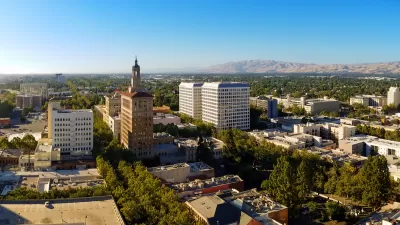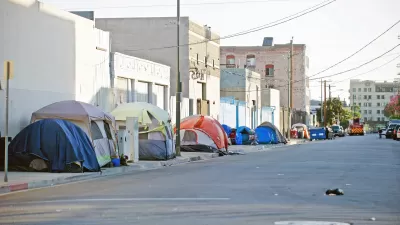Fighting a continued rise in homelessness in the region, a county program is successfully helping families avoid eviction.

According to an article by Patrick Sisson in Bloomberg CityLab, Santa Clara County’s Homeless Prevention System, or HPS, an eviction prevention program, has helped reduce homelessness and provide a crucial safety net for families in the San Jose area. “Researchers at the University of Notre Dame in South Bend, Indiana, who studied HPS found that 81% of those who enrolled were less likely to experience homelessness within six months.” The study also found that each $1 spent on the program returned $2.47 in community benefits, and almost all (95 percent) of recipient families remained in stable housing.
As Sisson explains, “HPS is part of a proliferating family of interventions predicated on the notion that the cheapest way to address homelessness is by keeping struggling tenants from being turned out on the streets in the first place.” The program offers more flexibility than other assistance programs and has no spending caps.
While the program can only serve as a stopgap in a region with a growing affordable housing shortage, the positive results show that no-strings-attached programs can help keep families in stable housing and address homelessness before it happens. However, broader issues continue to plague California’s housing market. In 2023, homelessness in Santa Clara County grew by 24 percent.
FULL STORY: In Pricey Silicon Valley, a Plan to Preempt Homelessness

Trump Administration Could Effectively End Housing Voucher Program
Federal officials are eyeing major cuts to the Section 8 program that helps millions of low-income households pay rent.

Planetizen Federal Action Tracker
A weekly monitor of how Trump’s orders and actions are impacting planners and planning in America.

The 120 Year Old Tiny Home Villages That Sheltered San Francisco’s Earthquake Refugees
More than a century ago, San Francisco mobilized to house thousands of residents displaced by the 1906 earthquake. Could their strategy offer a model for the present?

HSR Reaches Key Settlement in Northern California City
The state’s high-speed rail authority reached an agreement with Millbrae, a key city on the train’s proposed route to San Francisco.

Washington State Legislature Passes Parking Reform Bill
A bill that would limit parking requirements for new developments is headed to the governor’s desk.

Missouri Law Would Ban Protections for Housing Voucher Users
A state law seeks to overturn source-of-income discrimination bans passed by several Missouri cities.
Urban Design for Planners 1: Software Tools
This six-course series explores essential urban design concepts using open source software and equips planners with the tools they need to participate fully in the urban design process.
Planning for Universal Design
Learn the tools for implementing Universal Design in planning regulations.
Ada County Highway District
Clanton & Associates, Inc.
Jessamine County Fiscal Court
Institute for Housing and Urban Development Studies (IHS)
City of Grandview
Harvard GSD Executive Education
Toledo-Lucas County Plan Commissions
Salt Lake City
NYU Wagner Graduate School of Public Service





























